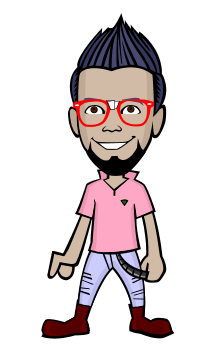|
Initially, there are no symptoms, but then it slowly emerges from the skin during an excruciatingly painful 30 days. —OTIS Archive 1
|
Way back in the later half of 1980s, US President Jimmy Carter was on his visit to Ghana. During his tour, he happened to visit a small village. It was in this forgotten corner of the universe that Mr Carter saw a woman whom he thought was holding a baby in her arms. However, it wasn’t her baby.
It was her breast.
Two-thirds of the village population at the time, including the aforementioned woman, were incapacitated by the Guinea Worm Disease, caused by the infection of the parasitic worm called 'dracunculiasis'. This worm makes its way into human body through consumption of water contaminated with its larvae.
Once inside the body, the worm starts to grow, oftentimes growing up to a metre long in a year's period.
Initially, there are no symptoms, but then it slowly emerges from the skin during an excruciatingly painful 30 days. Although it is very uncommon for the disease to cause death, it leaves the affected person incapable of conducting his or her daily activities.
Also see: WHO declares Peshawar world’s ‘largest reservoir’ of polio
When Carter had visited Ghana in 1986, the disease affected almost 3.5 million people in Asia and Africa. The woman who President Carter had encountered, had 11 worms in her body, with one of them coming out of her nipple.
The sight moved President Carter so much that he went back to US, and started a new mission: waging peace instead of waging war.
President Jimmy Carter launched the Carter Center Guinea Worm Eradication Program and resolved that the painful disease would not be allowed to spread further misery in the lives of the people living in the far-off areas of Asia and Africa, where clean drinking water was not available.
There is no medication to treat the affected person, nor is there a vaccination for prevention. However, prevention is possible by providing access to clean drinking water and other community-based measures and behavioural changes.
Read on: KP, Fata residents comprise 96pc of polio victims this year
The disease was deemed eradicable because of several reasons, including the fact that its larvae are limited to only stagnant water reservoirs, and the disease is also geographically limited — occurring only in Africa and Asia.
Also, prevention is possible because the affected person can be singled out visually once the worm starts appearing from the feet.
Filtering the water, providing improved drinking water facilities, and the use of larvicides in every area of occurrence are other preventive measures.
In May 1981, the Inter-Agency Steering Committee for Cooperative Action for the International Drinking Water Supply and Sanitation Decade (1981–1990) proposed that if the guinea worm is eliminated, it would be deemed as the indicator of a successful decade.
And now, with the joint work of WHO, UNICEF, and the Carter Center, this disease which had millions of affected people every year in 21 countries of Asia and Africa, is nearing its complete ouster from the planet.
Almost 30 years of intense surveillance, reporting, mapping of endemic areas, etc has seen the number of cases drop to just 126 cases in 2014 — a drop of 99.99 per cent.
This is a marvelous example of how community-based collaboration and teaching can be used to eliminate diseases. When we finally say goodbye to guinea worm, it will mark the elimination of the first parasitic disease from Earth and the second disease in all.
The first disease to be eliminated from our planet was smallpox, which was believed to have been affecting humans from prehistoric times. It was declared completely eradicated by WHO in 1979. The last occurring case of smallpox was reported in 1977.
Now, let us address the elephant in the room:
Only Pakistan and two other countries remain a hurdle in the eradication of the polio virus. From the entire planet!
While community-based efforts did really pay off in Africa, the reluctance of certain sections of our nation towards polio vaccination is keeping the virus alive and keeping the world at risk.
Look through: Jonas Salk — The hero we are unworthy of
When you hear historic news like the overcoming of guinea worm, you start believing in the incredible power of science coupled with sincerity and commitment of course. But when you hear the local news of vaccinators being shot dead across the country, hope dwindles.
Still, I am hopeful that after the guinea worm, the next threat to be completely neutralised will be the polio virus. Bill Gates recently said in an interview, that in the next 15 years, three more diseases will be wiped off from Earth, including polio. Concrete steps, however, are required to achieve this feat.
WHO’s certification policy requires three consecutive years of zero-case reporting before a disease can be certified as eradicated. So the nearest eradication year will be 2018.
The rest of the world is nearing the cause. There has been a massive drop in polio occurrences worldwide, and as Bill Gates said, the spotlight is on Pakistan.
Read on: 'We are protecting children from polio at the cost of our lives'
Amidst everything that hinders this worthy cause, I have to commend the dedication of our polio vaccinators, who risk nothing less than their lives to administer vaccines to children.
Just yesterday, I woke up to this news of a policeman shot dead while escorting a polio worker in Nazimabad.
I have no words. The third eradication cannot come too soon.



